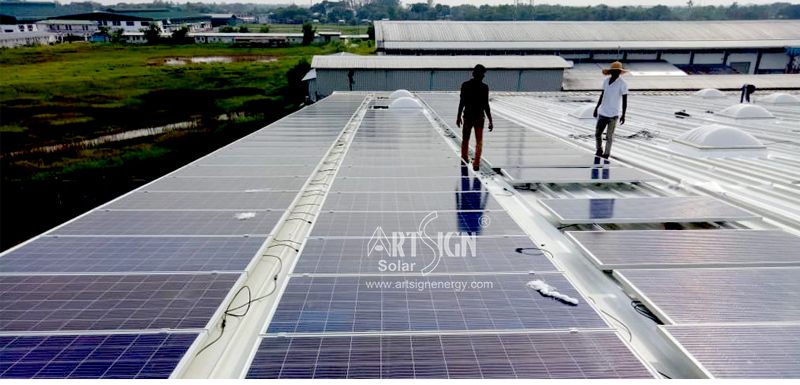Rooftop solar pv system is growing fast, but it's not growing at the same pace everywhere -- and it's not yet accessible to everyone. I love rooftop solar, and I would like to see them on every flat surface that gets sunlight — schools, stores, churches, storage units, etc. The roof solar installation is easy and all the components are simple. Let's see what kinds of components you need when install roof solar.

A. Solar panels
Solar energy begins with the sun. Solar panels (also known as "PV panels") are used to convert light from the sun, which is composed of particles of energy called "photons", into electricity that can be used to power electrical loads.
B. Mounting clamps
Mounting clamps are generally aluminum brackets with stainless steel bolts that hold the solar panels securely against the underlying racking. Some clamps provide an electrical grounding path between the panel and underlying racking.
C. Solar Racking
Solar Racking, which is made of aluminum or stainless steel, can hold the solar panels safely and stably. There are multiple roof solar mounting systems on the markets for options, such as the tile roof solar racking, the flat roof solar racking and slate roof solar racking, etc. It is required to choose different rooftop racking system according to different roof types.
D. Mounts
Mounts – also referred to as L-feet, standoffs or stanchions – attach the racking to the roof surface. Mounts vary depending on roof type and material, which varies from composition shingle to corrugated metal. A 20-panel array (about 5 kW) will typically require 25 to 40 mounts.
F. Direct current (DC) wiring
Direct current (DC) wiring (for string inverters) uses positive and negative wires from each panel connected to the wires on adjacent panels.
G. Alternating current (AC) wiring
Alternating current (AC) wiring (for microinverters and AC modules) uses AC cables (trunk cables or daisy chain cables) connecting each microinverter to adjacent microinverters. Cables must be secured to the racking or panels so that they do not hang down or rest on the roof surface.
H. Inverters
Inverters are electronic devices that can turn DC (Direct Current) to AC (Alternating Current). It is also responsible for controlling speed and torque for electric motors.
I. Grounding components
It will keep the system be securely grounded.
With rooftop solar becoming popular worldwide, it is becoming increasingly important for residential and commercial units to understand more about the solar PV system and its components. If you need special roof solar racking system solutions, Artsign will be your reliable partner. Kindly check out our office website at www.artsignenergy.com.
![]()
Unit 301, No. 600 Guankou South Road, Jimei District, Xiamen, China
Tel : 0086 592 6266951 0
Whatsapp :+8618030235875
Email : sales@artsign.net.cn
Teams : Artsign Energy